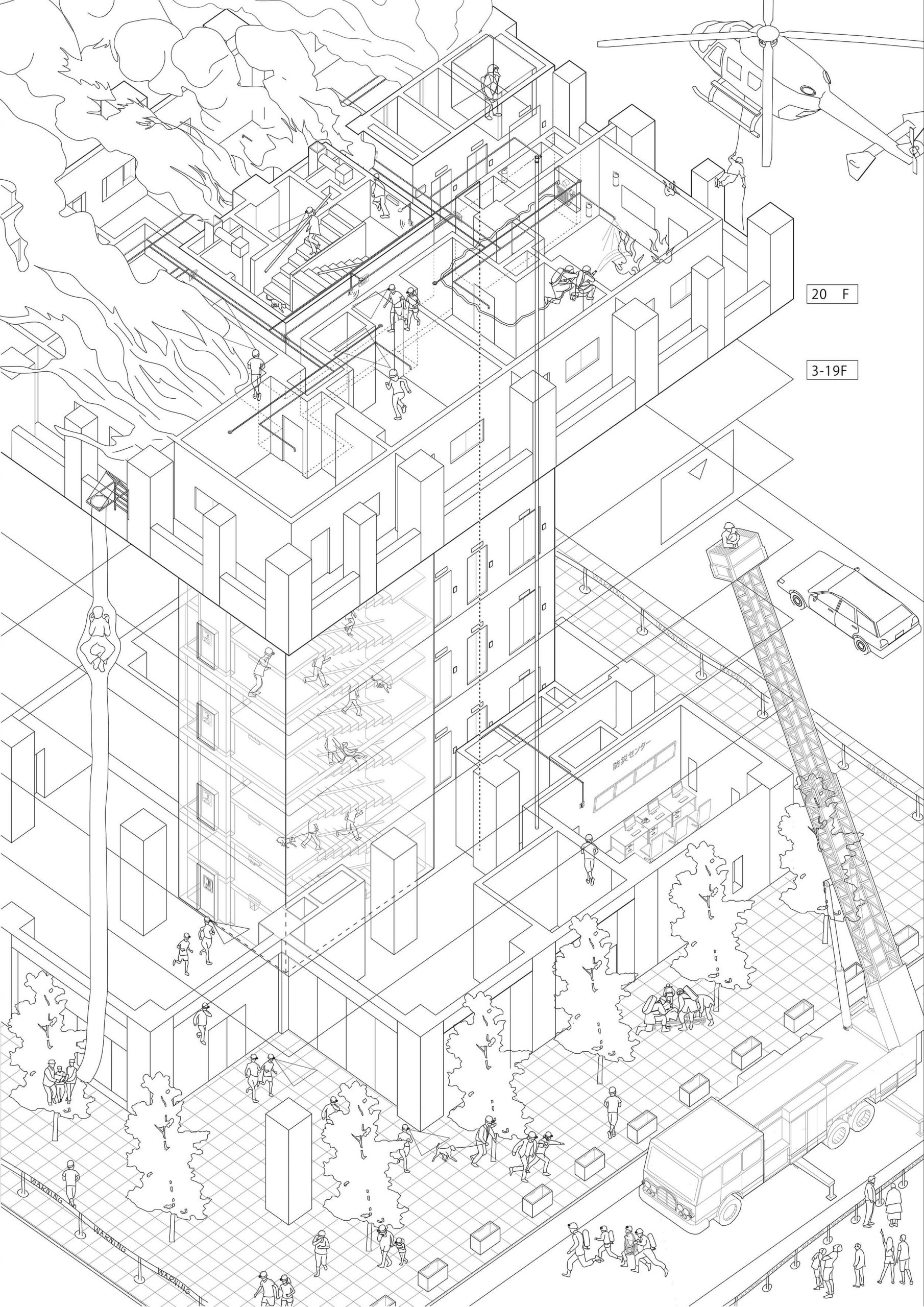From the Meiji Period to today the techniques of firefighting have shifted from the protection of a district, with large main streets or fire-resistant storehouses providing firebreaks, to en-masse fire-protected buildings, ensuring people’s ability to escape a conflagration. In the post-war period, with the densification of Tokyo, the vertical concrete staircases in multistory buildings—which themselves served as firebreaks along the main streets—became the major escape route, complemented by various types of devices that can be used from balconies or windows. In contemporary high-rises the common circulation system has become host to an entire emergency system, with smoke and gas detectors, alarms connected to ground-floor emergency centers, sprinklers, fireproof staircases, special emergency fire-fighter elevators, and even rooftop helicopter landing-pads.
Student: Meng Li
Garbage Handling
Private garbage handling in Japan is tied to precise garbage types, garbage bags, and collection days and times, giving a very formalized framework to the collection of the most private traces and evidence of our daily lives. This contrast becomes most visible when this framework is transgressed and the limits between private and public, the intimate and the extimate, are trespassed, for instance by not respecting the formal requirements of the rules of garbage collection or, at the opposite extreme, by stealing private records from garbage bags disposed of on the street or in the container of a condominium.
